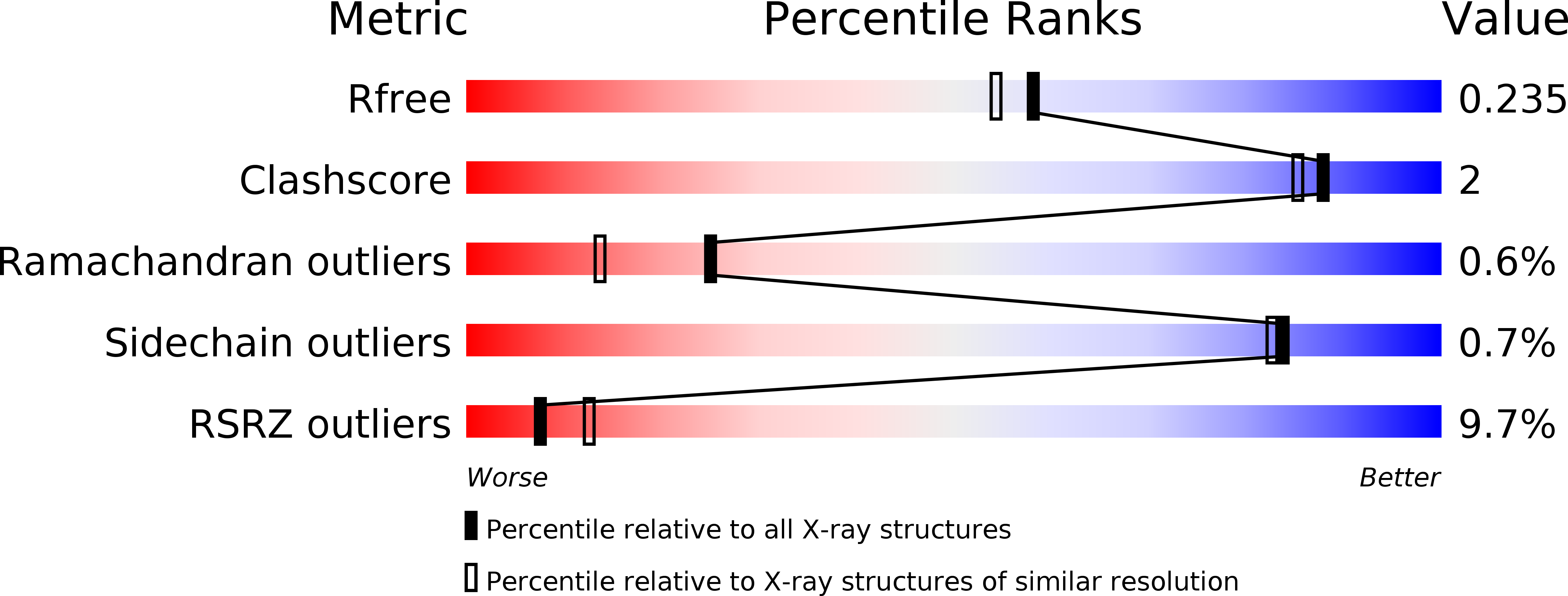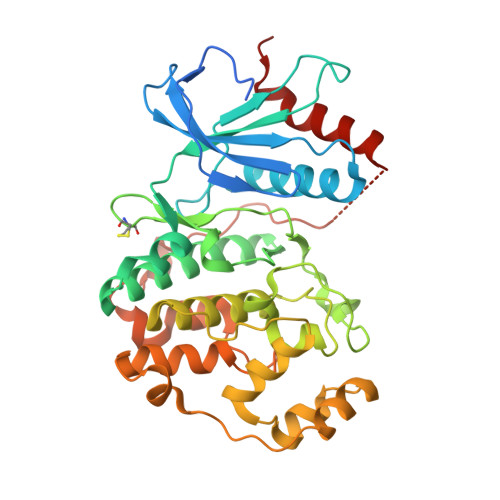Dual-Mechanism ERK1/2 Inhibitors Exploit a Distinct Binding Mode to Block Phosphorylation and Nuclear Accumulation of ERK1/2.
Kidger, A.M., Munck, J.M., Saini, H.K., Balmanno, K., Minihane, E., Courtin, A., Graham, B., O'Reilly, M., Odle, R., Cook, S.J.(2020) Mol Cancer Ther 19: 525-539
- PubMed: 31748345
- DOI: https://doi.org/10.1158/1535-7163.MCT-19-0505
- Primary Citation of Related Structures:
6RQ4 - PubMed Abstract:
The RAS-regulated RAF-MEK1/2-ERK1/2 signaling pathway is frequently deregulated in cancer due to activating mutations of growth factor receptors, RAS or BRAF. Both RAF and MEK1/2 inhibitors are clinically approved and various ERK1/2 inhibitors (ERKi) are currently undergoing clinical trials. To date, ERKi display two distinct mechanisms of action (MoA): catalytic ERKi solely inhibit ERK1/2 catalytic activity, whereas dual mechanism ERKi additionally prevents the activating phosphorylation of ERK1/2 at its T-E-Y motif by MEK1/2. These differences may impart significant differences in biological activity because T-E-Y phosphorylation is the signal for nuclear entry of ERK1/2, allowing them to access many key transcription factor targets. Here, we characterized the MoA of five ERKi and examined their functional consequences in terms of ERK1/2 signaling, gene expression, and antiproliferative efficacy. We demonstrate that catalytic ERKi promote a striking nuclear accumulation of p-ERK1/2 in KRAS-mutant cell lines. In contrast, dual-mechanism ERKi exploits a distinct binding mode to block ERK1/2 phosphorylation by MEK1/2, exhibit superior potency, and prevent the nuclear accumulation of ERK1/2. Consequently, dual-mechanism ERKi exhibit more durable pathway inhibition and enhanced suppression of ERK1/2-dependent gene expression compared with catalytic ERKi, resulting in increased efficacy across BRAF- and RAS-mutant cell lines.
Organizational Affiliation:
Signalling Laboratory, The Babraham Institute, Babraham Research Campus, Cambridge, United Kingdom. simon.cook@babraham.ac.uk andrew.kidger@babraham.ac.uk.

















